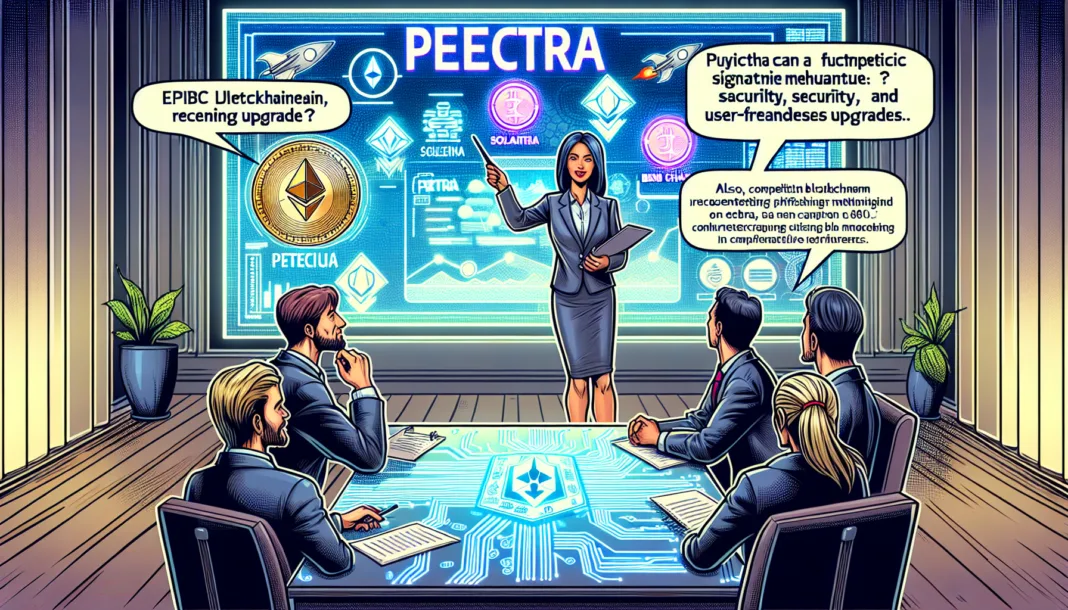KEY TAKEAWAYS
- The Pectra upgrade significantly enhances Ethereum’s scalability, security, and user-friendliness with 11 new Ethereum Improvement Proposals.
- EIP-7702 raises security concerns due to its offchain delegation mechanism, prompting calls for improved wallet security measures.
- Ethereum’s price surged post-upgrade, driven by increased dApp activity and institutional interest, despite competition from Solana and BNB Chain.
- Future upgrades like Fusaka aim to maintain Ethereum’s competitive edge, though challenges such as security risks and standardization remain.
The recent Pectra upgrade has provided Ethereum, the second-largest blockchain network by market capitalization, with a significant boost. The upgrade, which went live on May 7, 2025, is considered the most ambitious update since The Merge in 2022. It introduced 11 Ethereum Improvement Proposals (EIPs) aimed at enhancing scalability, security, and user-friendliness.
Among the key EIPs, EIP-7702 has drawn particular attention due to security concerns. Experts from CertiK have warned that the new signature mechanism, known as offchain delegation, could potentially open new avenues for phishing attacks. This mechanism allows hackers to seize wallets through fake requests, necessitating additional security measures from wallet developers, such as clear delegation request displays.
Impact on Ethereum’s Market and Competition
In the weeks following the Pectra upgrade, Ethereum’s price has shown significant growth, reaching over $2,600 as of May 23. Observers attribute this price increase to heightened decentralized application (dApp) activity and growing institutional investor interest, alongside external factors like recent trade deals.
Despite these advancements, Ethereum continues to face strong competition from other blockchains such as Solana and BNB Chain, which are experiencing higher user activity. For instance, Solana reportedly has 82.2 million active monthly addresses, compared to 10.3 million on Base, Ethereum’s Layer-2 solution.
Future Prospects and Challenges
Looking ahead, Ethereum’s long-term prospects include preparations for future upgrades like Fusaka, tentatively scheduled for late 2025. This upgrade aims to introduce Verkle trees for further optimization, keeping Ethereum competitive as a global financial settlement layer.
Three weeks after Pectra’s launch, reactions from authoritative publications and experts indicate that the upgrade has been successfully implemented, delivering significant technical improvements, particularly in user experience and staking. However, the market showed a delayed response, with a notable ETH price increase occurring only a week after the launch.
While the long-term outlook remains positive, it is tempered by risks such as EIP-7702 security concerns, lack of standardization, and competition from other blockchains. A full assessment of Pectra’s impact will require time to see how users and developers adopt the new features. More details on the upgrade can be found here.
Why This Matters: Impact, Industry Trends & Expert Insights
The recent Pectra upgrade to Ethereum, which introduced 11 Ethereum Improvement Proposals (EIPs), aims to enhance the network’s scalability, security, and user-friendliness. This upgrade is pivotal for maintaining Ethereum’s competitive edge in the rapidly evolving blockchain space.
Recent industry reports indicate that Ethereum’s Pectra upgrade is a significant milestone, especially for institutional investors. The increased staking limit per validator is expected to attract more institutional participation by allowing larger ETH stakes, which simplifies validator management and lowers operational costs. This aligns with Ethereum’s goal to enhance its appeal to large-scale investors and support its market position.
According to BeInCrypto, security concerns around EIP-7702 have emerged, highlighting potential phishing risks. This reinforces the need for enhanced security measures to protect users and maintain trust in Ethereum’s network. As Ethereum continues to evolve, addressing these security challenges will be critical to its sustained success and adoption.
Explore More News:
Disclaimer: The views expressed in this article are those of the authors and do not necessarily reflect the official policy of CoinsHolder. Content, including that generated with the help of AI, is for informational purposes only and is not intended as legal, financial, or professional advice. Readers should do their research before taking any actions related to the company and carry full responsibility for their decisions.

